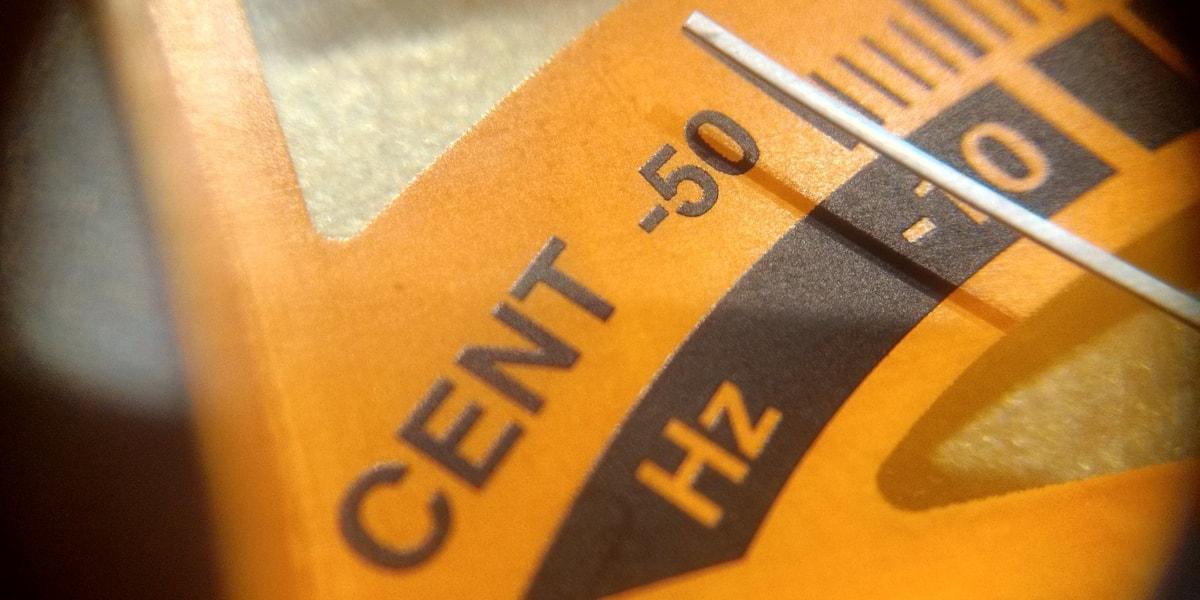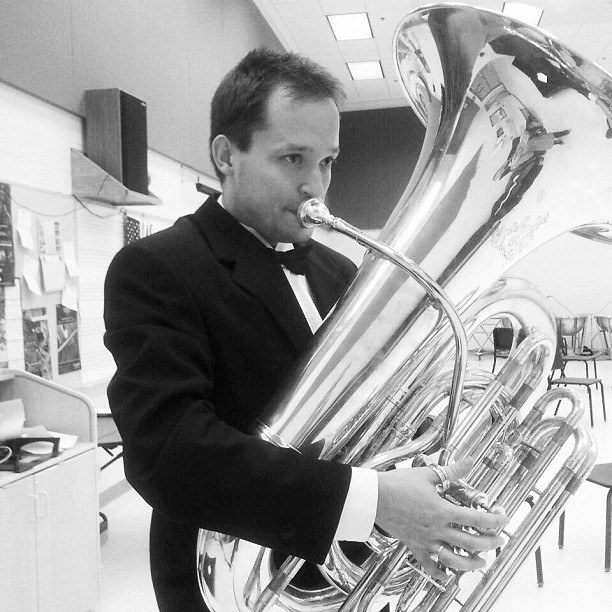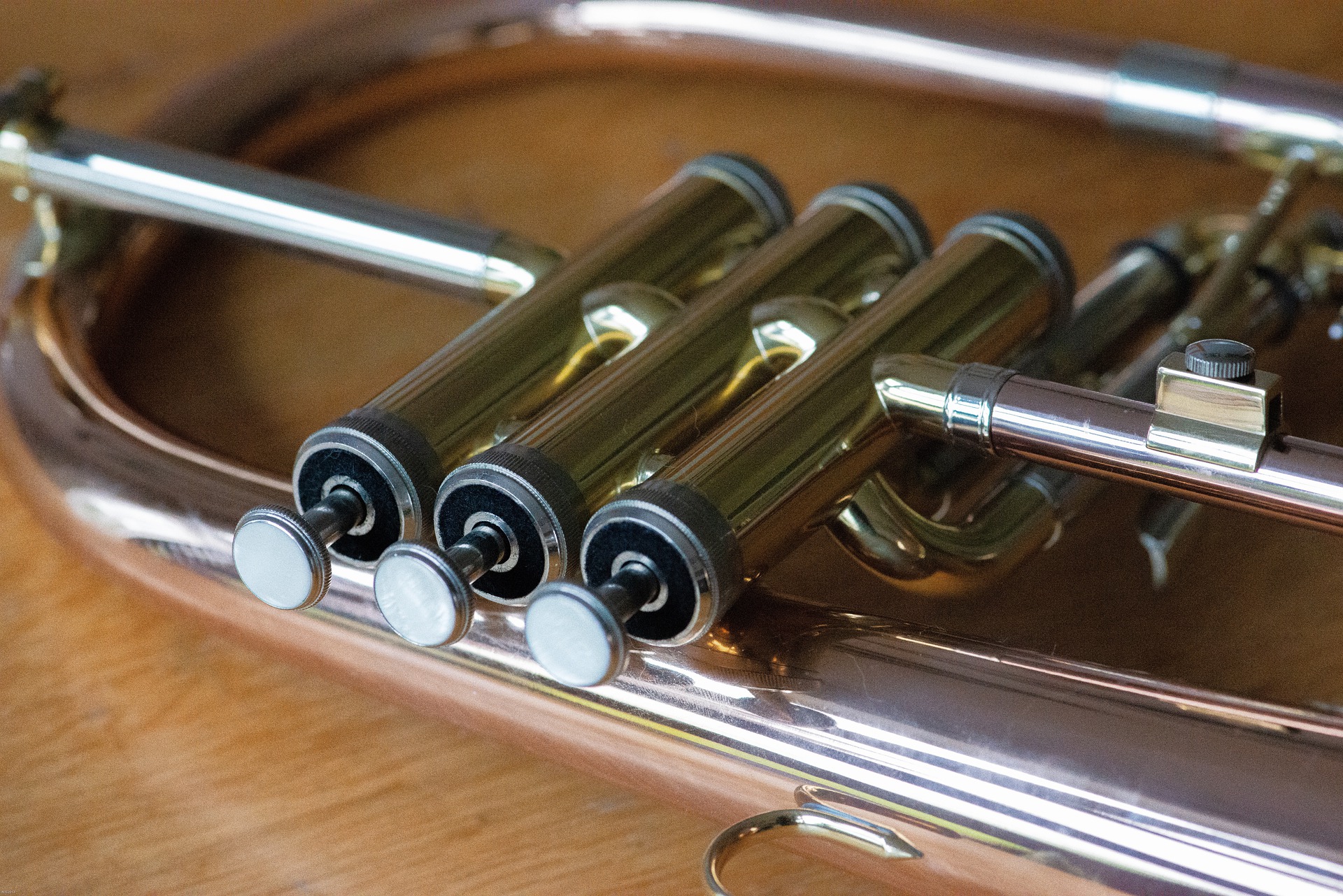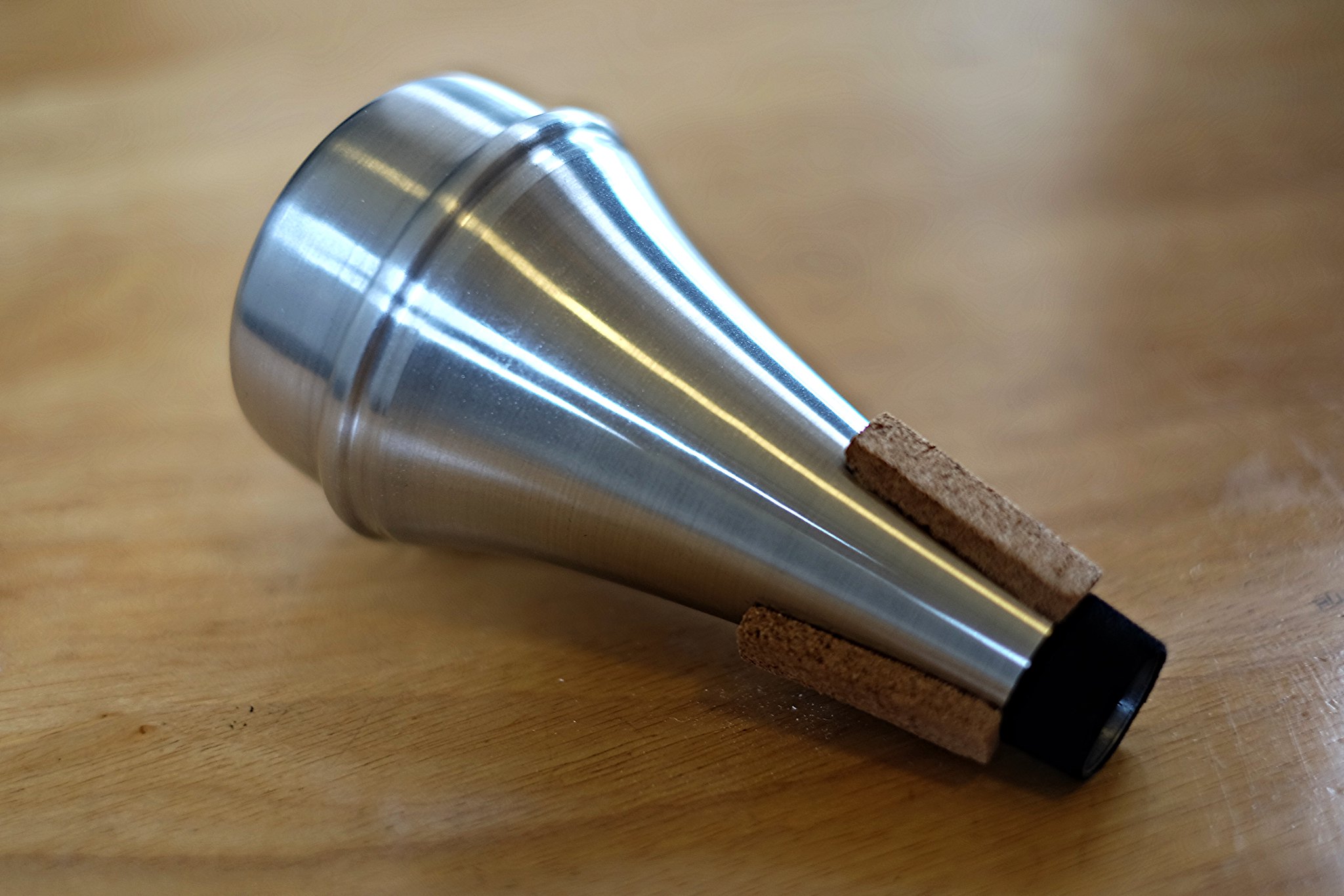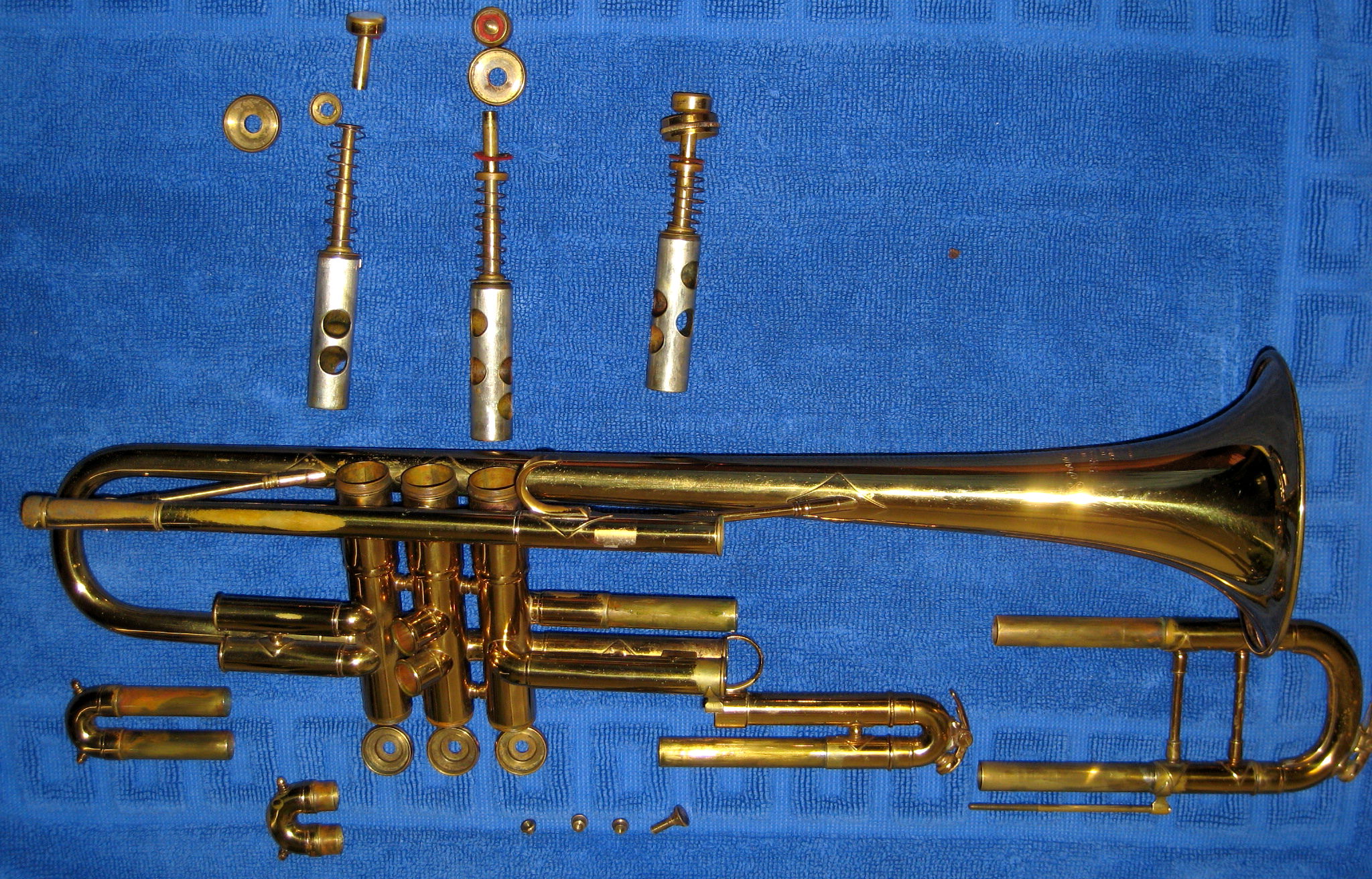Hey #TeamTrumpet! In this article, we're going to learn all about how to tune a trumpet: why tuning is important, how we need to adjust our instrument, and use our ears to help us as we play.
Why Is Tuning Important?
Have you ever had that feeling of pain as you listen to someone perform a piece terribly? Perhaps it's an unaccompanied National Anthem by a diva-in-training, or an American Idol performance gone horribly wrong.
Maybe they are performing the wrong notes. Maybe the wrong rhythms. But I can guarantee you; more than anything, they are probably performing horribly out of tune.
On the other hand, when you are performing in tune, your sound is more resonant. You can actually sound louder, even without exerting more energy, simply by playing in tune.
We won't get into the full science of intonation and what exactly is happening with sound waves and our ears, but suffice it to say that tuning is an incredibly important part of playing the trumpet.
Getting Started
Warming Up
It's incredibly important to have warmed up thoroughly before attempting to tune. Getting your air flowing, blood moving in your lips, and brain working is necessary so you can simply focus on the item at hand.
Additionally, your instrument may be cold which can adversely affect pitch. Growing up in Minnesota meant for some awfully cold marching band rehearsals when the snow started to fly. And going on band tours with brass instruments shoved under the bus even meant occasions of frozen valves before concerts.
Make sure that you and your instrument are warmed up before continuing.
Reference Pitch
There are a couple of concepts to understand when getting started with the tuning process. First, is the idea that we want to match pitch with an instrument that where the pitch stays static (the same). This could be any kind of electronic drone, like a keyboard or electronic tuner.
This is a good place for us to start. Later on in ensemble rehearsals, your band director may have you tune to a reference pitch that someone else plays, like an oboe (for woodwinds) or a tuba (for brass). But in reality, that musician who plays the tuning pitch is matching themselves against a tuner, so you are really just one extra step removed from the process. It's less likely that there would be time or resources for everyone in the room to pull out their own tuner and go through a tuning process, so using a single point of reference saves time and gets everyone listening as a group.
What Is The Trumpet Tuning Note?
Most commonly, trumpets tune to Concert Bb, which on trumpet is the C in the third space of the treble clef.
For Bb trumpets, this is part of their fundamental harmonic series and is in the middle of the range, so it should speak freely.
Making Adjustments Too Early
I usually take the approach of playing the tuning note before hearing the reference pitch or looking at the tuner. Because brass players can so naturally lip up or down a note, it almost becomes instinctual for us to modify our pitch based off of the note we hear or what we see on the tuner. Normally, this is a good thing. It helps us adjust our trumpet intonation on the fly.
But since we are trying to adjust the core tuning of our instrument using our trumpet tuning slide, and not our embouchure, we need to play the first pitch, lest we start to subconsciously adjust our own pitch to the tuning pitch that we hear.
Tuning With A Tuner
-
Turn your electronic trumpet tuner on.
-
Face the tuner away from you so you are unable to see
-
Play and hold a C with a large, full sound. Sustain the pitch without letting it waver.
-
Look at the tuner now, without making any changes to your pitch.
-
If the tuner displays the pitch name, double check to see that it is picking up the pitch accurately. Unless the tuner is specifically designed for trumpet, remember that it will probably display concert pitch, A#/Bb.
-
If the needle is pointed to the right, the note is sharp. That means that the note you are playing is higher (even incrementally) than where it should be. This means that you need to make an adjustment to the length of your trumpet by pulling out the main tuning slide to lower the pitch.
-
If the needle is pointed to the left, the note is flat. That means that the note you are playing is lower (even incrementally) than where it should be. This means that you need to make an adjustment to the length of your trumpet by pushing in the main tuning slide to raise the pitch.
-
Repeat the process until the needle of the tuner is dead center.
Tuning With A Reference Pitch By Yourself
-
Play the tuning note (C).
-
Play the reference tuning note on a keyboard or electronic tuner.
-
Sing the reference tuning note out loud. This will help your brain internalize the musical pitch in order to be able to compare what you are playing on your trumpet with what you are hearing from the electronic pitch.
-
Play your trumpet pitch again. Is the trumpet pitch lower or higher than the note you just sang? Make adjustments with the same steps we did above until your trumpet C matches the electronic tuning pitch.
Tuning With A Reference Pitch In A Group
-
Listen for your tuning note (Concert Bb, perhaps from a tuba player)
-
Sing the tuning note in your head. Note: many good band directors will actually encourage singing the pitch in unison as a group to help establish the pitch in everyone's heads. However, if your performing ensemble isn't used to this, don't be the crazy one singing aloud by yourself! Hear the pitch, sing it in your head.
-
Play the pitch on your trumpet. Focus as best as you can to hear your own sound inside of the ensemble's. This can be hard to do. Don't try to play louder or edgier than anyone else, but hone in the best you can into your own trumpet.
-
Make any adjustments you can, according to the same principles above.
Go Big Or Go Home
Go big or go home!
Here's the situation. You're nervous, because you have to tune in front of a group of people, and you're anxious that you're going to make the wrong decision when it comes to adjusting your trumpet's tuning.
But the beauty of it is, there are really only two possible decisions. Well, technically there are three. You can pull your slide out, you can push your slide in, or you can leave it exactly where it is.
What I've found with most musicians, no matter how young, old, experienced, or inexperienced they may be is that most people can tell when something is wrong.
If I were to ask you, does something sound funny here? And I play two pitches for you, one of which is out of tune compared to the other: 9 times out of 10, people can tell me that something is off.
They might not have any clue which note is higher than the other. They might get that deer-in-the-headlights look if I ask them if the second pitch is sharper or flatter than the other. And guess what, that's totally okay!
So we basically can reduce the choices from push in, do nothing, and pull out to simply push in and pull out. If you can tell that your trumpet sounds "good," as in, it matches the pitch. You're all set.
Now we're simply left to distinguish whether we are sharp or flat.
Here's what usually happens -
You're timid about making the wrong decision. So you decide to make a small adjustment. You think to yourself, "If I just pull out a little bit, and I'm wrong, it won't sound that much worse and no one will probably notice."
Here are the outcomes from that decision:
-
You were right! You're in tune. Kudos to you, let's move on.
-
You were wrong. No one "noticed" at the time, so you feel okay about yourself, but now your trumpet is out of tune and will affect the rest of your performance or rehearsal.
-
You were wrong. You continue to make micro-adjustments, but it's harder for your ear to determine when exactly you're spot on, because you keep making tiny changes.
Blech. I would much prefer you go big or go home!
Make a huge, doozy of a decision.
Think about it this way. You heard the tuning pitch, and you know you're off. You just aren't sure if you're sharp or flat.
If you decide to pull out your tuning slide, and you were already too flat, the sound will be immediately apparent. It will sound even worse than it was in the first place. Same thing with being already sharp and pushing in even further.
Your ear will pick up on the fact that the sound has now gotten worse. No biggie. Now you know you should have made the opposite decision.
As a newer trumpet player, it will be easier for you to overshoot where you should be in order to hear the difference in pitch.
Let's say you really needed to pull out your tuning slide half a centimeter. But instead, you overshot it and pulled out a full centimeter, twice as far as you needed to go.
Now it would become incredibly apparent to you that the pitch had gone too far, and you could double back by estimating that the pitch really needs to sit in the middle of where it started and where it landed.
Again, all of this is way better than making small, incremental changes and being totally unsure of what is right or wrong when it comes to pitch matching.
And, the great part is that you will continue to improve in your pitch matching and intonation every time. If you work to carefully sing and internalize pitch, you won't need to make huge tuning adjustments all of the time.
The go big or go home mentality is to help ease you out of any timidness when it comes to tuning. Soon you will be able to hear smaller changes and be able to make quick adjustments on the fly.
Working With A Tuner
Understanding Cents
When it comes down to the tuner itself, there are a couple of concepts that you'll need to understand. One is the unit of measurement when it comes to tuning. You'll often hear band directors talk about how many "cents" off you are.
If you've never heard of cents, that might not make a lot of sense to you. Ha, see what I did there?
A cent is 1/100th of a semitone. A semitone is a half step in music, like the distance from F to F#.
On a speedometer of a car, you might see a range from 0-140 miles per hour, with 0 on the left-hand side, and 140 on the right-hand side.
On a tuner, our ideal place is right in the middle at 0 cents. That means that we are perfectly in tune.
Let's use Concert Bb as an example, our C on trumpet.
A perfectly in-tune C will sit exactly at 0 on our tuner. Typically we see markings that go in increments of 10 cents. So if you work your way to the left (flat), you'll go from 0 to -10, -20, -30, -40, and -50.
If you hit -50 cents on your C, that's super flat! Like, gross to your ears sounding flat.
What if you went 55 cents flat? A typical tuner doesn't even show 55 cents flat!
But remember what we said about 100 cents being between each half step? So 55 cents below a C is actually the same as 45 cents (100 minus 55) above a B!
So instead of seeing Concert Bb (our C) at -55 cents, we would see Concert A (our B) at +45 cents.
And it works the opposite way as well. If we were +55 cents sharp on our trumpet C/Concert Bb, it would appear as -45 cents flat on trumpet C#/Concert B.
Calibrating The Tuner
For purposes of most music you'll be performing, we use A=440Hz as our standard calibration. Each tuner calibration process will be a little bit different, so we won't dig into how to calibrate your particular tuner.
Just know that if you see some other number listed on your tuner, like 442, 444, or something completely different, that you should look into adjusting this to 440.
Other Tips And Tricks
Work With A Friend
I talked previously in this article about not looking at your tuner until your tone was fully centered, and then using the tuner to identify where the pitch was sitting.
But even this can be something that we cheat, subsconsciously or not, by lipping up or down the tone.
A great exercise is to team up with a friend. You can take turns with one of you playing a tuning note and the other looking at the tuner. This allows your friend to give feedback directly, without giving you the change to adjust the pitch as you see the results on the screen.
You can practice this with other pitches as well, not just your main tuning pitch, as different notes have different pitch tendencies on the trumpet.
Tone Quality Is Important Too
Sometimes, we tend to compartmentalize musical concepts like tone, intonation, articulation, rhythm, etc. You might think, why would my tone really play much of a role when it comes to the tuning of the trumpet?
One of the greatest issues when it comes to tone quality is breath support. Without adequate breath support, your tone can sound weak and lack directionality.
Likewise, if your tone is weak, it is more difficult to center the tone. Instead, it wavers and can't seem to find its "home."
No amount of tuning the instrument will fix your core tone issues. You will never truly be able to play in tune until you can control the core tone of your trumpet. If you look at the tuner and see it constantly moving up and down, all over the place, this is a warning sign that you are not controlling your sound. Now of course, this can happen to anyone at any time for a brief period, but you should be able to stabilize and center your tone so the needle commits to pointing in a specific direction.
Pitch Changing In Rehearsal
Just a reminder that the tuning of your instrument can adjust mid-rehearsal or performance. It could be the temperature of the room under warm lights, or your embouchure wearing down, but bear in mind that you may need to make adjustments mid-flight.
Tuning Of Specific Pitches
Now that you've mastered the basics of tuning a trumpet, what's next?
Well for starters, even though you have tuned your trumpet's core sound by adjusting your tuning slide, that doesn't mean that all of your notes will be magically in tune. In fact, most trumpets have a couple of notes that are notorious for being out of tune, despite the overall trumpet being in tune.
The good news is, we can mitigate these out of tune notes with our valve slides. So while the main tuning slide will stay put, we can adjust our first and third valve slides in order to fix the pitch.
This is one of those areas that sets intermediate trumpets apart from beginning trumpets. While almost all trumpets have some sort of adjustable third valve slide, many beginner trumpets to not have the ability to easily adjust the first valve slide on the fly. One can argue this isn't much of a problem, as beginners will probably not be focusing much on first valve slide tuning adjustments early in their careers. But I think if you do have a first valve slide, it's good to get into positive habits early so that they become second nature.
Very Sharp Notes
These are the gross ones that every trumpet player talks about and learns about right away: Low C# and D at the bottom of the treble clef. You should always use your third valve slide to compensate for their sharpness by kicking out the slide when the pistons are pressed down.
Sharp Notes
1st line E 2nd line G
2nd space A
F, F#, G, A at the top of (or right above) the treble clef
The pitches that utilize the first valve in isolation or combination can use the first valve slide, the adjustment is less than that of the third valve slide adjustments above.
Flat Notes
Fourth space C# through fifth space E
When it comes to flat notes, there really aren't any options to improve tuning with the slides. That's because the default position for your first valve slide is already in all of the way. Since sharpening the note would require the tubes to get smaller, you don't have options as you can't push the slide in further than it rests at by default.
This is the same for out-of-tune notes that use no valves, open notes like the G mentioned in the sharp section.
In these cases, we can't rely on valve slides to do the trick, so we need to lip up and down the notes (depending on the circumstance). You can "lip" the note by changing the direction of the air stream. In the case that a note is flat, we'll need to direct the air stream upwards. When the note is sharp, we can direct the air downwards.
Just Intonation
So far, we've talked about the overall trumpet tuning and the pitch tendencies of individual trumpet notes. But there is actually another level of tuning that comes into play if you really want the notes of a chord to ring out.
We'll dive deeper in another article on the full specifics of just intonation, but the general principle is that each pitch needs to be thought of relatively in relation to the other notes of a chord. And when I say chord, of course we're not talking about playing multiple notes simultaneously on a trumpet. This could be the chord formed when playing with a brass quintet, or in band or orchestra. It can also mean a solo trumpet that is outlining chords throughout a melody (which is pretty much every piece ever)!
Example Use Case
Let's say I am starting a practice session, and I tune my trumpet with an electronic tuner according to the steps we outlined above. I was a little flat, so I adjusted my main tuning slide.
Now let's say I play the note G on the second line of the staff. We know that this note in isolation tends to be a little sharp. It's not as crazy as say our low C# or D, but it's still sharp. G is an open note (no valves), so we need to adjust the pitch by lipping the note down with our air stream.
Now I play that same G as part of a Db major chord (concert pitch) which encompasses the notes Db, F, Ab or Eb, G, Bb on trumpet.
Here's the wacky part. I am playing the third in this major chord. And according to the principles of just intonation, in a major chord, the third needs to be lowered by 14 cents in order to be fully in tune.
So on top of lipping the note down to adjust for the pitch tendencies of G, now I need to lip it down even further for the note to sound correct in the context of the Concert Db major chord.
Whew, so now we're done, right?
Not quite. What if instead of a concert Db major chord, playing concert F (our G), we now needed to play a concert D major chord with concert pitches of D, F, A, (or in trumpet) E, G, B?
And we are still assigned the third of the chord, G. Same exact note as before. Only this time, we are playing the minor third rather than the major third because our ensemble is playing a minor chord.
The third in a minor chord needs to be raised by 16 cents in order for the chord to sound in tune.
So how crazy is that?! You can play the exact same note, in our case G on trumpet, but we need to lip the pitch up or down depending on what part of the chord and the quality of the chord. And we need to take into account the pitch tendencies of the notes themselves, so that we don't over or under-compensate. It's like a never-ending math equation going on in our heads!
Putting It Into Practice
At the end of the day, most musicians aren't constantly doing math on every single note of every single chord.
They have common pitch tendencies memorized from experience (you'll really start to hear some of them after a while), and they know which chord qualities have notes that stick out the most, and which direction they need to adjust.
And we make the adjustments that we need to especially on chords that are held out. A whole note at the end of a piece or phrase of a Bach chorale is a perfect place to make just intonation adjustments. A passing tone on a jazz riff? Not something that should even cross your mind. Ultimately, you'll learn these rules over time and implement them in areas of your playing that most demand attention to intonation.
